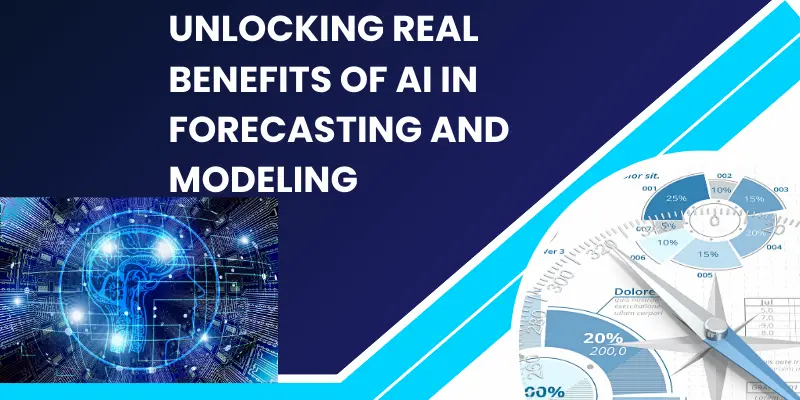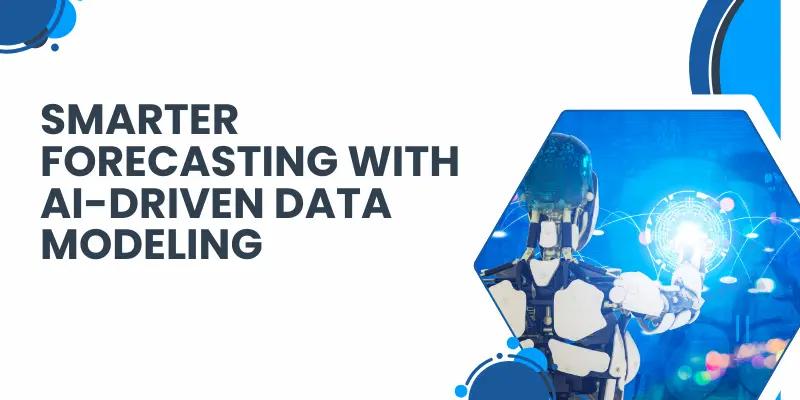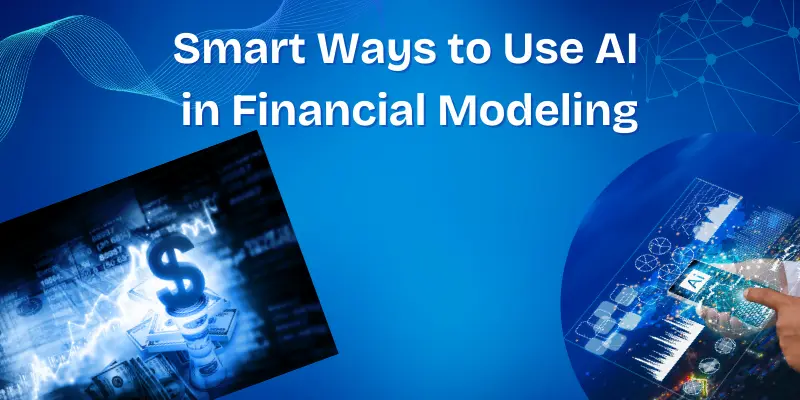Unlock the Power of AI for Financial Forecasting: Smarter Decisions, Faster Growth
Published: 20 May 2025
When I started in finance, our financial models felt like a fragile house of cards, constantly held up by assumptions and hours of manual work. It was a delicate balancing act that often introduced errors even before we finished building. But today, with the rise of AI for Financial Forecasting, we’re closer to a new reality. I’ve seen firsthand how generative AI is changing the modeling game. It can simplify complex, data-heavy, and time-consuming tasks, making them fast and easy. What used to be a slow grind can now be streamlined by AI for Financial Forecasting with natural language commands and smart real-time adjustments. This isn’t just a buzzword—it’s a practical tool already helping teams like mine.
The promise is real: AI for financial forecasting can help spot anomalies, reduce risk, and even identify trends, opportunities, and risks long before we would have noticed them. We no longer have to manually build every model from scratch or rely on outdated templates. With AI, updating models doesn’t require hours anymore – we just feed in fresh data, and it picks up from there. I remember reading a statistic from the European Spreadsheet Risk Group that said over 90% of spreadsheets contain an error. That’s a scary thought when a simple error can cost millions for a large company. Now, with AI for financial forecasting, not only are we reducing those risks, but we’re also boosting our capabilities and making our entire business forecasting and modeling strategy far more robust and accurate.
Unlocking Real Benefits of AI in Forecasting and Modeling
From my experience working in finance, one of the biggest pain points has always been the repetitive grind, especially in financial modeling and forecasting. Traditional data entry, endless spreadsheets, and the need to copy and paste formulas without a single wrong number can turn into a full-time job. But what we’ve seen with AI and automation is a shift in how these complex tasks are handled.

With tools like Mosaic’s Arc AI, entire workflows can now be integrated, allowing teams to automate steps in the existing process and save hours weekly. These systems not only speed up the forecasting process but also help improve scenario planning capabilities by making it easy to iterate models and test different assumptions on the fly as the landscape changes.
What’s especially exciting is how large language models (LLMs) allow even non-technical team members to build financial models from scratch using just a normal language prompt. That means anyone on your FP&A or finance team can now generate financial forecasts without relying solely on skilled financial analysts or technical analysts. Plus, when AI checks for anomalies in your datasets – whether it’s from Stripe data, Excel, or Google Sheets – you’re far less likely to run into errors that might otherwise go unnoticed. AI doesn’t get tired or make “fat-finger” mistakes. It keeps your outputs clean, verified, and accurate, handling millions of lines of data for even the biggest multinational company, with no importing required. Just like types of AI for social media management help teams scale content and maintain brand consistency, these tools are bringing automation and precision to financial operations in ways we never thought possible.
Smarter Forecasting with AI-Driven Data Modeling
When I first started working in finance, we spent hours manually collecting financial information from multiple sources, trying to make sense of raw data before even beginning any real analysis. It was tedious, error-prone, and honestly, didn’t leave much time for the deeper insights that matter most.

But with AI tools, especially those powered by machine learning models and predictive analytics, things have changed. Now, large datasets can be collated, categorized, and organized almost instantly. This shift lets my team focus on uncovering trends, spotting anomalies, and identifying real opportunities and risks instead of getting stuck in manual tasks.
As Rob Matthews from Spiff cleverly put it during a recent round table, AI should handle “the simplest tasks that suck the most.” And it does. In our workflow, we now rely on automation to combine scattered data, acting like a data administrator that sets a solid foundation. From there, our human analysts can fine-tune and iterate using strategic thinking. It’s no longer just about the what, but about the why behind the numbers. Tools like Mosaic now serve as an assistant that blends the skills of a financial analyst, data modeler, and FP&A expert to provide clean data and baseline models – something I wish I had years ago when building financial modeling and forecasting systems from scratch.
Smarter, Safer Forecasting with AI
From my experience working with AI models in finance, one of the most important things people overlook is how much data they’re feeding into systems like ChatGPT without thinking twice. These tools are trained on massive data sets, pulling information from all over the internet – from low-quality affiliate blog posts to high domain authority websites, and even casual Tweets or threads on Reddit. When you input a natural language question like “What will our Q4 revenue look like? The model searches for the most relevant response based on the data points it’s already seen or learned. That’s where the real security concerns come in.
Once your dataset is shared – even indirectly – it could be scraped and used to further train that model, whether you gave it a thumbs up or a thumbs down on its answers. That’s why many tech solutions are moving toward a trusted ecosystem approach. Instead of sending sensitive company data to an outside platform, an LLM can act as a translator – you ask a question, and it converts it into a technical request that stays inside your secure systems. It’s critical to understand how the capability of the AI technology you implement can either protect or expose your business. Always know who sees your questions, how your data is handled, and where your information might end up.
Smart Ways to Use AI in Financial Modeling
When I first explored AI for financial forecasting to improve my company’s modeling efforts, I quickly realized how valuable it was in simplifying repetitive tasks that once consumed too much time. To begin, it’s crucial to understand your finance function – identify what areas are draining energy and where AI for financial forecasting can add real value.

Think of it like Rob from Spiff said: start with what’s most inefficient, then explore how automating those pain points can level up your business strategy.
With clarity around those high-impact areas, the next step is choosing tools that align with your needs. I’ve worked with financial modeling platforms equipped with smart assistants that could instantly pull insights or create forecasts based on real-time shifts, like reduced marketing spend or pricing adjustments. A standout for me has been Mosaic with its Arc AI integration – an end-to-end AI for financial forecasting solution. After we brought it into our workflow, our team tested it widely and was impressed by how accurately and consistently it handled complex tasks. It didn’t just assist us – it reshaped the way we approached planning and forecasting.
Still, there’s one principle I always follow: trust, but verify. Mosaic’s co-founder, Brian Campbell, echoed that sentiment – just like you onboard new hires and review their work, the same goes for AI. In the early stages of adopting AI for financial forecasting, you’ll review outputs closely. But as the system proves itself, confidence builds, and it becomes a trusted part of your strategy.
How Mosaic Leads with AI-Powered Financial Modeling
Mosaic is transforming the FP&A function by moving beyond just tallying numbers from the past to focusing on guiding smarter financial decisions for the future. Their integration of Arc AI on the platform enhances the impact of AI for financial forecasting, helping finance teams reduce manual and low-value tasks and shift focus to high-value analysis and strategic functions. This evolution empowers companies to operate from a single source of truth, using company data to drive complex financial modeling and more accurate forecasting outputs – one of the core strengths of AI for financial forecasting today.
What makes this even more powerful is how teams can interact with the system through a natural chat interface. With AI for financial forecasting, users can now quickly interrogate numbers and ask insightful questions—like why ARR increased last quarter or how a premium price point might impact SaaS revenue. Mosaic’s AI adapts instantly to shifts in advertising spend, headcount, or pricing, keeping up with fast-moving business changes. From personal experience, this kind of intelligent forecasting not only saves time but also injects more expertise and energy into strategic decision-making, delivering ultimate value to the broader company. If you’re exploring real-world applications of AI for financial forecasting, Mosaic’s platform is a must-see—schedule a demo to experience it firsthand.
Conclusion
So guys, in this article, we’ve covered AI for financial forecasting in detail. From my experience, adopting AI tools like Mosaic’s Arc AI can truly transform how your finance team works, making forecasting more accurate and less time-consuming. I highly recommend exploring these solutions to stay ahead in today’s fast-changing business world. Don’t wait – try a demo today and see how AI can elevate your financial planning.
FAQs
The main types include machine learning, natural language processing, and predictive analytics. Machine learning helps computers learn from data, while natural language processing understands human language. Predictive analytics uses data to predict future financial trends.
Machine learning automatically learns patterns from large data sets without being explicitly programmed. Traditional methods often rely on fixed formulas and human input. AI adapts and improves its predictions over time.
Yes, many AI tools are designed with simple interfaces for beginners. They often include tutorials and customer support to help new users. You don’t need deep technical skills to get started.
Common issues include data quality problems, unclear model results, and understanding AI outputs. Sometimes AI may give unexpected answers if the data isn’t complete. It’s important to verify AI results and learn how the tool works.
NLP lets AI understand and analyze text-based data like news or reports. This helps forecast financial trends based on market news or social media. It makes forecasting more dynamic and responsive to real-world events.
Predictive analytics is a broader process that uses data and statistics to predict outcomes. Machine learning is a type of predictive analytics that uses algorithms to learn from data automatically. Both work together in financial forecasting.
No, different tools have different features and focus areas. Some are better for small businesses, others for large companies. It’s important to choose AI software that fits your business needs and data size.
Check if your input data is accurate and up-to-date. Try different scenarios or settings in the AI tool. If problems continue, contact support or consult experts to understand the model’s limits.
AI helps automate routine tasks and analyze large data faster but does not fully replace humans. Human judgment is still needed to interpret results and make strategic decisions. The best results come from AI and humans working together.
It depends on how fast your business environment changes and how much new data you get. Regular updates, like monthly or quarterly, help keep predictions accurate. Many AI tools can update models automatically with new data.

- Be Respectful
- Stay Relevant
- Stay Positive
- True Feedback
- Encourage Discussion
- Avoid Spamming
- No Fake News
- Don't Copy-Paste
- No Personal Attacks

- Be Respectful
- Stay Relevant
- Stay Positive
- True Feedback
- Encourage Discussion
- Avoid Spamming
- No Fake News
- Don't Copy-Paste
- No Personal Attacks





